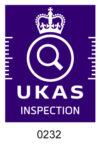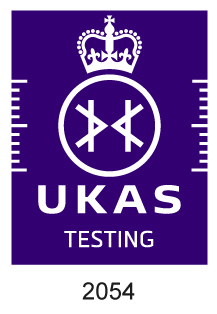Menu
close
**LATEST** New quantitative face fit services for RPE
Book in today
Exposure to asbestos still claims roughly 5,000 lives each year in the UK.
A majority of these are former tradespeople who were ‘industrially exposed’ to asbestos-containing materials in construction, maintenance, or refurbishment work.
However, a smaller, but increasing, proportion of those fatalities are a result of ‘occupational exposure’ – where former teachers, nurses, and other non-trade professionals are losing their lives, simply from having worked in a building in which asbestos was installed.
The more concerning fact is that, while asbestos remains in over 1.5 million buildings in the UK, people will continue to be exposed: which means that duty holders must act to protect them.
In this blog, we explain what duty holders need to know to understand and act on the risks of occupational exposure in their buildings.
Let’s start with a sobering fact.
Since 2017, 53 hospital workers and 94 education professionals have sadly lost their lives due to historic asbestos exposure.
What is notable about these fatalities is that none of these were among people who had worked directly with asbestos. These are healthcare professionals, teachers, and other administrative staff.
According to data published by HSE, 15% of all 2,268 mesothelioma fatalities in 2023 were ‘occupational’, with the remaining 85% being those who had formerly worked in trades.
Whilst 15% is a much smaller percentage than those exposed due to ‘industrial exposure’, it’s evident that this proportion of fatalities caused by ‘occupational exposure’ is still an alarming amount – one that tends to be a surprise to many who become exposed.
There is a tendency to underestimate the need for urgent action from duty holders, for two possible reasons:
1) Asbestos is perceived as a ‘historic’ problem – fatalities are falling, a majority of fatalities are among those aged 75 and over, and since asbestos was banned in 1999, it is assumed that the problem is gradually coming to an end.
2) As most fatalities are among tradespeople, awareness campaigning and safety measures have tended to target those at risk of industrial exposure – with far less awareness about the risks of exposure among other workers and the general public.
These assumptions are exactly what duty holders need to avoid, as we explain below.
Duty holders can’t ignore the risks of asbestos because of how widespread it still is.
As we have already mentioned, asbestos is installed in over 1.5 million buildings in the UK. However, it isn’t always ‘hidden away’ where only trained professionals can reach it – it can be found in ceilings, walls, insulation, doorframes, and many other places workers and visitors frequently travel.
Moreover, it’s far from being a historic problem – it’s one with a long legacy. To this day, it is estimated to be installed in:
With this in mind, it becomes rapidly apparent just how many staff and visitors can unwittingly come across it day to day.
Over time, with multiple ‘touchpoints’, it amounts to a serious exposure risk.
That being said, you might be aware that the presence of asbestos isn’t the source of risk – the nature of the building and its occupants matter, too.
The additional challenge for duty holders protecting staff from ‘occupational exposure’ is that there isn’t a one-size-fits-all solution for minimising that risk.
For example, there are multiple challenges in schools: from preventing vandalism that could inadvertently disturb asbestos in walls and ceilings, to making decision-makers aware of the heightened exposure risk of teaching in one of the UK’s 3,000 remaining temporary CLASP buildings.
In hospitals and hotels, stairwells and service corridors that are likely to be fitted with asbestos may be deemed a ‘low priority’ for maintenance as they aren’t accessible to patients or guests – but they are highly travelled by staff.
Likewise, a new leaseholder of a shop may risk exposing their staff if they don’t have a full picture of the condition of asbestos in their building – all because the previous leaseholder didn’t keep their asbestos management plan up to date.
All of these are problems unique to these facilities – but they all present a serious risk to unwitting staff and building visitors who simply don’t have the same knowledge – or protective equipment – that many tradespeople do.
This is why duty holders must act on their behalf to prevent that risk.
Fortunately, while the nature of the building and the risks change from one building to the next, the steps to protect staff and visitors have a simple starting point: ensure that your asbestos management plan is complete and up to date.
If it is, it will give you a clear picture of where asbestos is in your facility, what condition it is in, and who is most at risk of exposure.
Duty holders who have this information can create an effective plan of action: from simply removing access to an area, to starting the process of contracting a qualified asbestos removal expert.
In doing so, duty holders will not only be compliant, but they can also build a strategy to effectively protect their staff, visitors and occupants from the risks of exposure.
Keeping your management plan up to date and following its recommendations will help you stay compliant and keep your staff and visitors safe. However, if you don’t know what steps you need to take – either because your management plan is incomplete, outdated, or you simply don’t have the time to implement its recommendations – that is when you can rely on support from a competent asbestos consultancy, such as AEC.
With over 25 years of experience in supporting duty holders across diverse businesses, we offer pragmatic advice tailored to your unique environment. Simply click aec.uk.net to learn more or call 0203 384 6175 to talk about the specific challenges you face.

